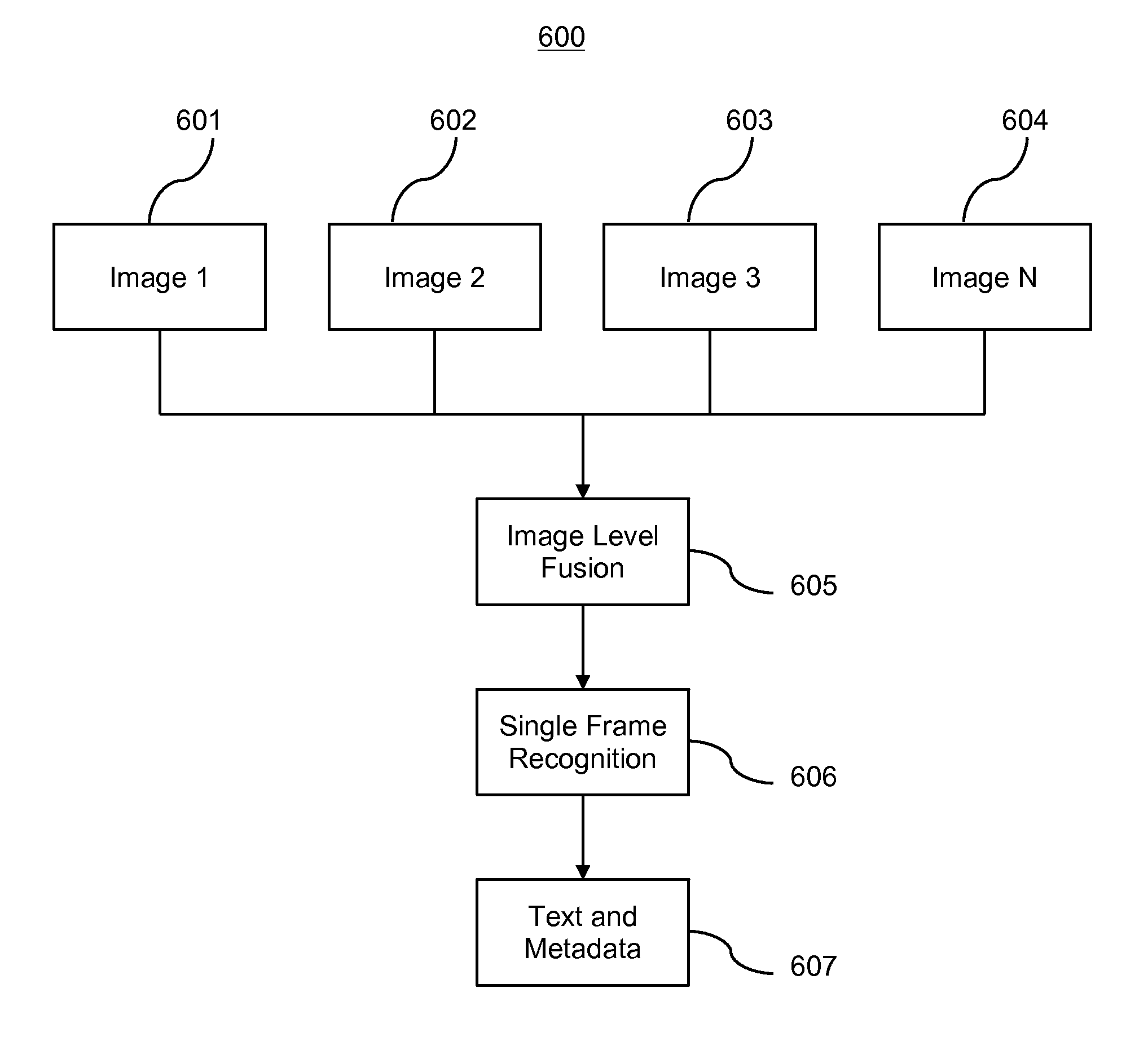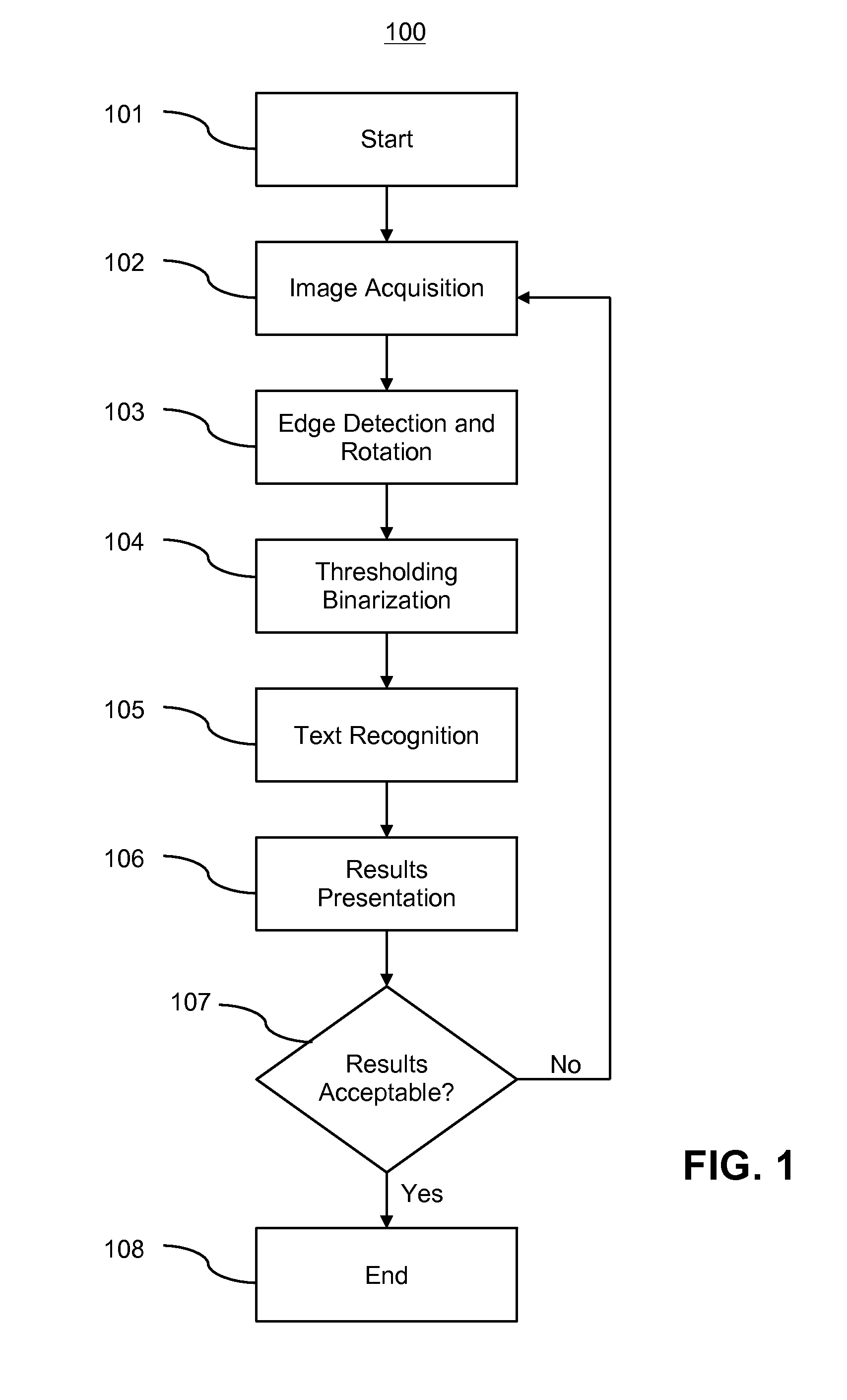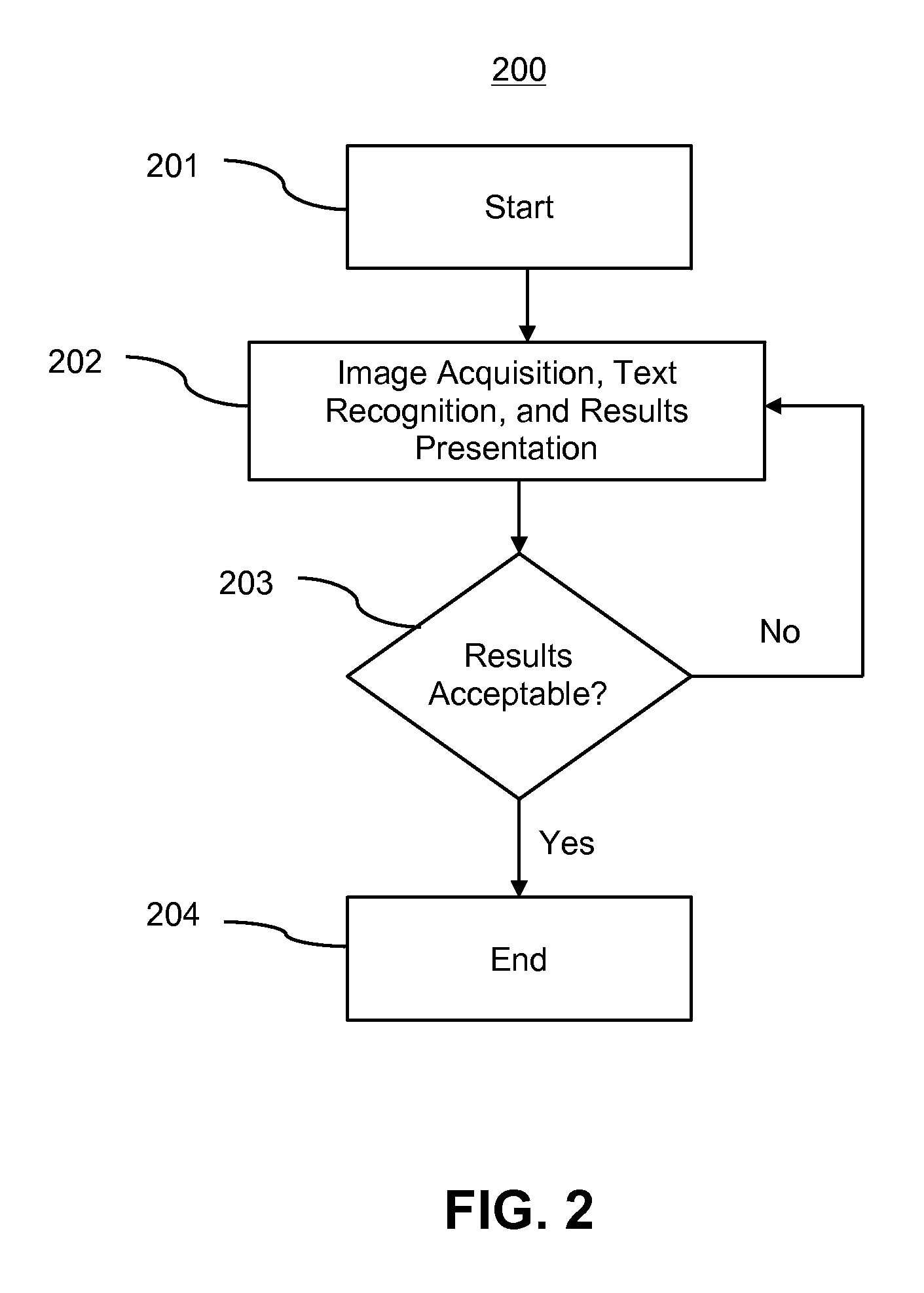Optical character recognition system using multiple images and method of use
a character recognition and image technology, applied in the field of optical character recognition system and method of use, can solve the problems of different distortions of images taken at different times, different angles, and locations, and achieve the effect of increasing the efficiency and accuracy of digitizing printed texts
- Summary
- Abstract
- Description
- Claims
- Application Information
AI Technical Summary
Benefits of technology
Problems solved by technology
Method used
Image
Examples
Embodiment Construction
[0033]The present invention is directed towards an OCR system that utilizes multiple images to construct one or more accurate images. For purposes of clarity, and not by way of limitation, illustrative views of the present OCR system are described with references made to the above-identified figures. Various modifications obvious to one skilled in the art are deemed to be within the spirit and scope of the present invention.
[0034]FIG. 1 depicts a diagram of a user feedback loop for traditional scanning 100. To start 101, a user prepares a document for scanning using an optical scanner such as a flatbed scanner, a document feeder, or another device equipped with a camera. Preparing the document for scanning can entail many steps such as locating the corners of the document and releasing the camera shutter. Thereafter, an image on the document is acquired 102. This is accomplished by detecting edges and rotating the document 103 until the edges of the document are substantially parall...
PUM
 Login to View More
Login to View More Abstract
Description
Claims
Application Information
 Login to View More
Login to View More - R&D
- Intellectual Property
- Life Sciences
- Materials
- Tech Scout
- Unparalleled Data Quality
- Higher Quality Content
- 60% Fewer Hallucinations
Browse by: Latest US Patents, China's latest patents, Technical Efficacy Thesaurus, Application Domain, Technology Topic, Popular Technical Reports.
© 2025 PatSnap. All rights reserved.Legal|Privacy policy|Modern Slavery Act Transparency Statement|Sitemap|About US| Contact US: help@patsnap.com



